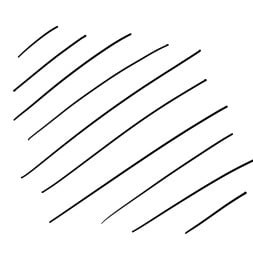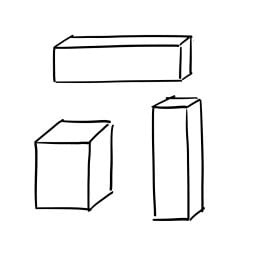How To Draw Straight Lines [With 4 Exercises!]

If mastering the art of drawing straight lines by hand is a goal for you, then you’ve found the right place to start. The ability to create precise, straight lines is an essential skill for any aspiring artist, and one that requires dedication and practice to perfect. In fact, the quality of an individual’s lines can be a telling indicator of their level of experience as an artist – so it’s worth taking the time to learn and refine this fundamental technique. With this in mind, today’s post will explore various methods for learning how to draw straight lines by hand, providing you with the guidance and inspiration you need to take your artistic skills to the next level.
3 crucial tips
The art of drawing a straight line may seem straightforward, but there’s more technique involved than meets the eye. To achieve razor-sharp lines, I’ve found that three key strategies are crucial. Firstly, instead of moving from your wrist, aim to draw with your shoulder, allowing for broader strokes and greater control over your movements. This subtle shift in approach can make all the difference when it comes to creating long, uninterrupted lines.Next, focus on where you want the line to end up rather than fixating on the pencil or pen itself. It may seem counterintuitive at first, but this mindset allows you to trust your instincts and draw with more confidence. By knowing your starting point and desired endpoint, you’ll find that precision isn’t as crucial.Lastly, work quickly and with conviction – even if you’re not feeling entirely confident. The temptation is to slow down and scrutinize every detail, but when drawing lines, speed and assurance are essential. As soon as you pause or hesitate mid-line, the natural inclination is to wobble or deviate from your intended path. By moving swiftly and decisively, you’ll find that your lines become increasingly straight and true.
Practising straight lines
When flipping through vintage drawing manuals, you may stumble upon an exercise that involves filling pages with nothing but lines – horizontal, vertical, and diagonal ones at that. While this practice can be effective, it’s also easy to get bogged down in the monotony of it all. To mix things up, try incorporating these exercises into your drawing routine. Start by completing one until you feel a sense of familiarity, then move on to the next. By cycling through each exercise several times, you’ll find that your line work will noticeably improve.
1 Parallel lines



To create this unique design, begin by sketching a few parallel lines, leaving ample space between them. Next, draw additional parallel lines directly between the existing ones, maintaining the same distance and spacing. Repeat this process, layering more lines between each previous set, until the resulting pattern is incredibly dense and no longer allows for further additions.
2 Connecting the dots


While this exercise may not be a revolutionary approach, it’s a simple yet effective way to put into practice the second tip. To get started, focus on one dot and then, without breaking your gaze, draw an imaginary line to another dot. Be mindful of not peeking at your pen or pencil as you do so.
3 Draw objects & letters



Parallel lines don’t have to be ordinary – with a dash of creativity, you can craft a wide range of shapes and designs using only straight lines. Why not give writing with parallel lines a try? Start by sketching out the rough outline of what you want to create, then fill in the details with straight lines. You might be surprised at how effective it can be.I took this idea a step further by drawing a heart shape using nothing but parallel lines. To get started, I drew horizontal lines to establish the basic form, and then added additional lines at varying angles to add some visual interest. The possibilities are endless – why not try drawing your own name, a cute animal, or even your favorite food?
4 Cubes with textures


As I pondered the concept of straight lines, my mind naturally gravitated towards geometric shapes like squares, rectangles, and cubes. To hone my skills in rendering these lines, I decided to experiment with drawing a few simple figures. This led me to attempt decorating them with various patterns comprising straight lines. My first attempt resulted in…
Time for action!
As you’ve made it this far, it’s time to trade in your reading glasses for a pencil and paper! Take one of the exercises we’ve covered and commit to practicing your lines daily for several weeks. Consistency is key – even just a few minutes a day can lead to remarkable progress. While perfecting straight lines might not be the most thrilling task, it’s the foundation upon which all great drawing skills are built. Mastering the basics is what sets the skilled artist apart from the rest.






